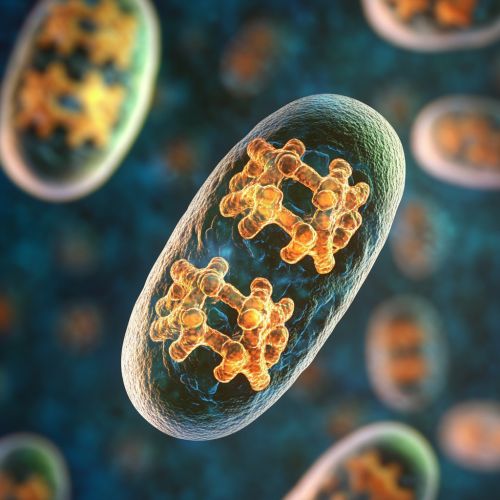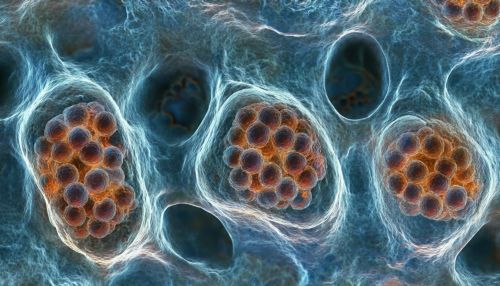Bcl-2 Family
Introduction
The Bcl-2 family of proteins plays a crucial role in the regulation of apoptosis, a form of programmed cell death essential for maintaining cellular homeostasis and development in multicellular organisms. This family is characterized by its involvement in either promoting or inhibiting apoptosis, thereby influencing cell survival and death. The Bcl-2 family is named after B-cell lymphoma 2 (Bcl-2), the first discovered member, which was identified due to its role in certain types of cancer. The proteins within this family are integral to the mitochondrial pathway of apoptosis, and their dysregulation is implicated in various diseases, including cancer, neurodegenerative disorders, and autoimmune diseases.
Structure and Classification
The Bcl-2 family proteins are classified into three main groups based on their function and the presence of conserved Bcl-2 homology (BH) domains. These groups include anti-apoptotic proteins, pro-apoptotic effector proteins, and pro-apoptotic BH3-only proteins.
Anti-apoptotic Proteins
Anti-apoptotic members, such as Bcl-2, Bcl-xL, and Mcl-1, contain all four BH domains (BH1, BH2, BH3, and BH4). These proteins function by binding to and sequestering pro-apoptotic members, preventing them from triggering the apoptotic cascade. Structurally, these proteins possess a hydrophobic groove that accommodates the BH3 domain of pro-apoptotic proteins, inhibiting their activity.
Pro-apoptotic Effector Proteins
Pro-apoptotic effector proteins, including Bax and Bak, typically contain BH1, BH2, and BH3 domains. Upon activation, these proteins oligomerize and form pores in the outer mitochondrial membrane, facilitating the release of cytochrome c and other apoptogenic factors into the cytosol, thereby initiating the apoptotic process.
Pro-apoptotic BH3-only Proteins
BH3-only proteins, such as Bid, Bim, and Puma, are characterized by the presence of only the BH3 domain. These proteins act as sensors of cellular stress and damage, and they function by directly activating pro-apoptotic effectors or by neutralizing anti-apoptotic proteins. The BH3 domain is crucial for their interaction with other Bcl-2 family members.
Mechanism of Action
The Bcl-2 family proteins are central to the intrinsic or mitochondrial pathway of apoptosis. This pathway is primarily regulated by the balance between pro-apoptotic and anti-apoptotic members. Under normal conditions, anti-apoptotic proteins maintain mitochondrial integrity by inhibiting the activation of pro-apoptotic effectors. However, in response to apoptotic stimuli, BH3-only proteins are activated and can either directly activate Bax and Bak or inhibit anti-apoptotic proteins, leading to mitochondrial outer membrane permeabilization (MOMP).
Mitochondrial Outer Membrane Permeabilization (MOMP)
MOMP is a critical event in apoptosis, resulting in the release of cytochrome c and other pro-apoptotic factors from the mitochondria into the cytoplasm. Cytochrome c binds to apoptotic protease activating factor-1 (Apaf-1), leading to the formation of the apoptosome, a multiprotein complex that activates initiator caspase-9. This, in turn, activates executioner caspases, such as caspase-3 and caspase-7, culminating in cellular demolition.


Regulation of Bcl-2 Family Proteins
The activity of Bcl-2 family proteins is tightly regulated at multiple levels, including transcriptional, post-transcriptional, and post-translational modifications.
Transcriptional Regulation
The expression of Bcl-2 family genes is regulated by various transcription factors. For instance, the tumor suppressor p53 can induce the expression of pro-apoptotic genes like Bax and Puma in response to DNA damage. Conversely, survival signals can upregulate anti-apoptotic genes through transcription factors such as NF-κB.
Post-transcriptional Regulation
MicroRNAs (miRNAs) play a significant role in the post-transcriptional regulation of Bcl-2 family members. For example, miR-15a and miR-16-1 are known to target Bcl-2 mRNA, reducing its expression and promoting apoptosis.
Post-translational Modifications
Post-translational modifications, including phosphorylation, ubiquitination, and cleavage, can modulate the stability, localization, and activity of Bcl-2 family proteins. Phosphorylation of Bcl-2 by kinases such as JNK can inhibit its anti-apoptotic function, while ubiquitination can target proteins like Mcl-1 for proteasomal degradation.
Role in Disease
The dysregulation of Bcl-2 family proteins is implicated in various diseases, particularly cancer. Overexpression of anti-apoptotic proteins like Bcl-2 and Bcl-xL is commonly observed in tumors, contributing to resistance to apoptosis and chemotherapy. Conversely, loss of pro-apoptotic proteins can also lead to tumorigenesis.
Cancer
In cancer, the balance between cell survival and death is disrupted, often due to the overexpression of anti-apoptotic Bcl-2 family members. This provides cancer cells with a survival advantage, allowing them to evade apoptosis and proliferate uncontrollably. Targeting these proteins with small molecule inhibitors, such as BH3 mimetics, is a promising therapeutic strategy.
Neurodegenerative Disorders
In neurodegenerative diseases, such as Alzheimer's and Parkinson's, the inappropriate activation of apoptosis contributes to neuronal loss. Pro-apoptotic Bcl-2 family members are often upregulated in these conditions, leading to increased cell death.
Autoimmune Diseases
In autoimmune diseases, defective apoptosis can result in the survival of autoreactive immune cells, contributing to the pathogenesis of conditions like systemic lupus erythematosus. Modulating the activity of Bcl-2 family proteins may offer therapeutic potential in these diseases.
Therapeutic Implications
The Bcl-2 family proteins are attractive targets for therapeutic intervention due to their central role in apoptosis regulation. The development of BH3 mimetics, which mimic the action of BH3-only proteins, has shown promise in preclinical and clinical studies. These agents can selectively inhibit anti-apoptotic proteins, restoring the apoptotic balance in cancer cells.
BH3 Mimetics
BH3 mimetics, such as Venetoclax, have been developed to target specific anti-apoptotic proteins. Venetoclax, a Bcl-2 inhibitor, has been approved for the treatment of chronic lymphocytic leukemia and shows potential in other hematological malignancies.
Combination Therapies
Combining BH3 mimetics with other therapeutic agents, such as chemotherapy or targeted therapies, may enhance their efficacy and overcome resistance mechanisms. This approach is currently being explored in clinical trials.
Conclusion
The Bcl-2 family of proteins is integral to the regulation of apoptosis, with significant implications for health and disease. Understanding the complex interactions and regulatory mechanisms of these proteins is essential for developing targeted therapies for various diseases, including cancer and neurodegenerative disorders. Continued research into the Bcl-2 family will likely yield new insights and therapeutic strategies for modulating apoptosis in disease contexts.
